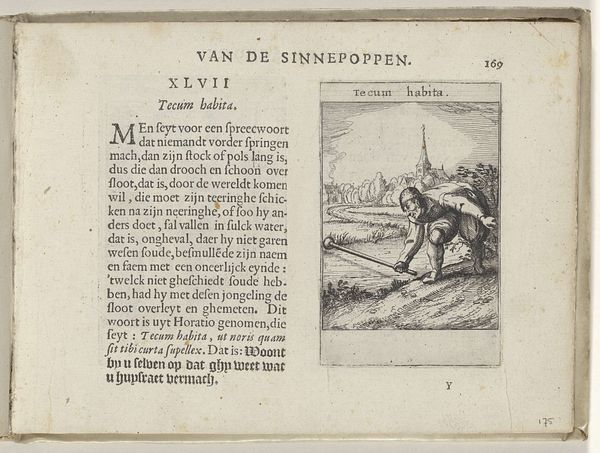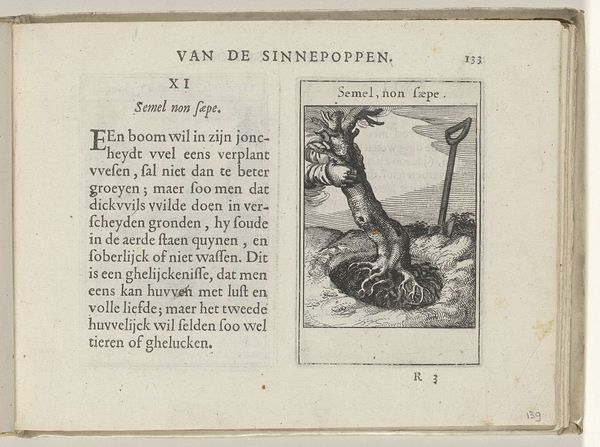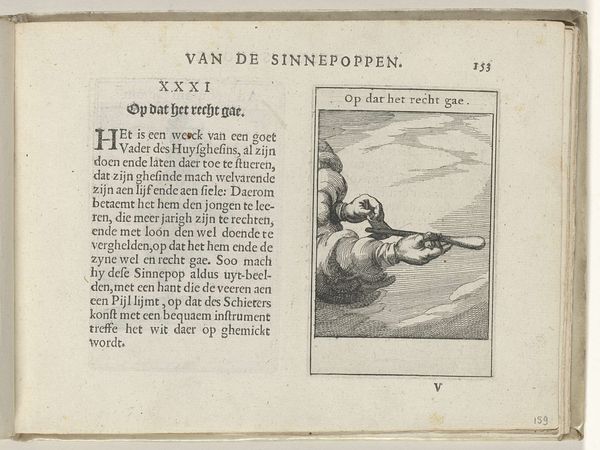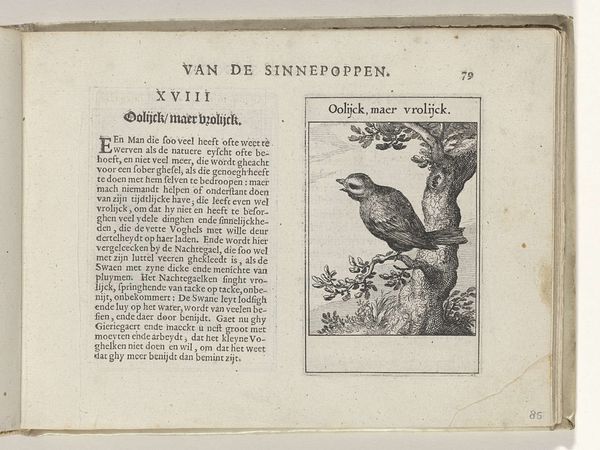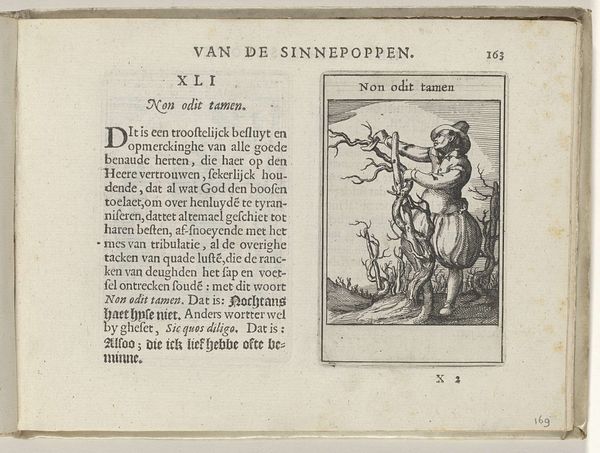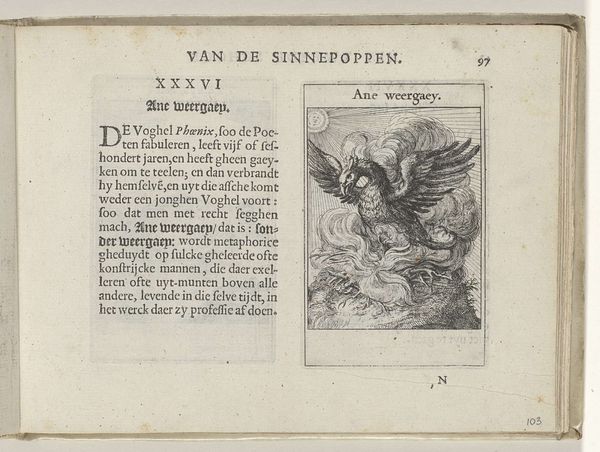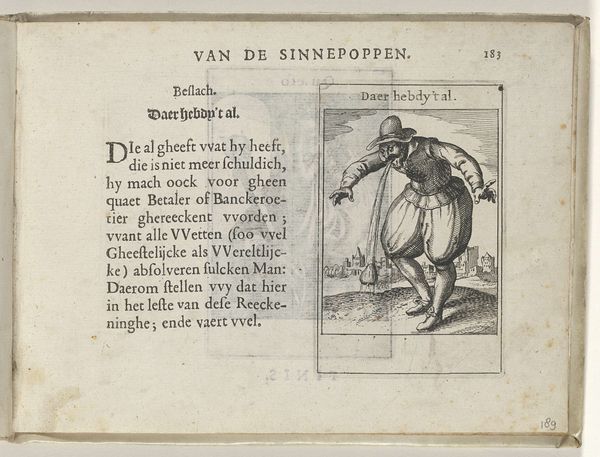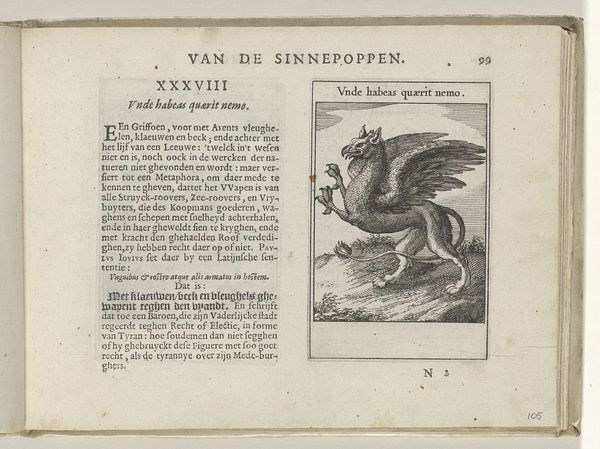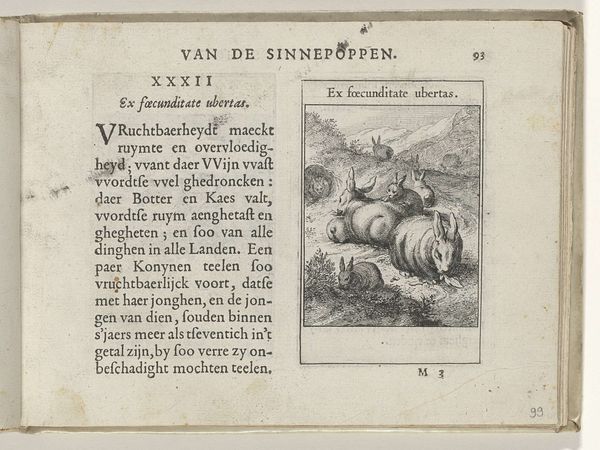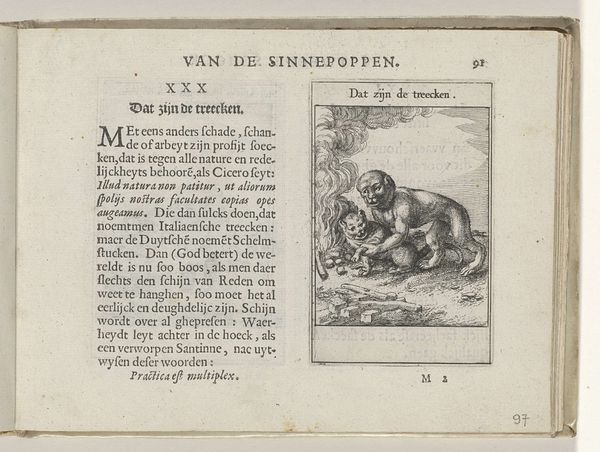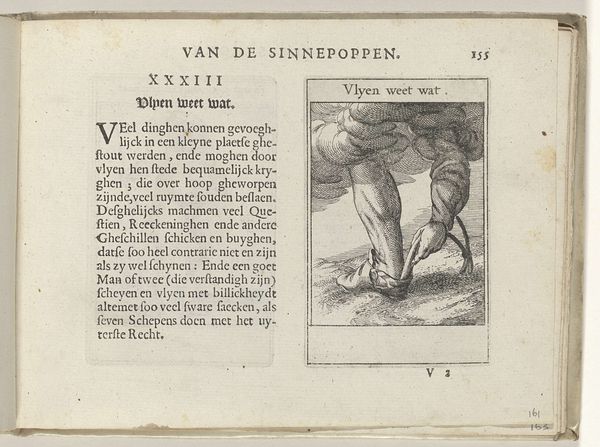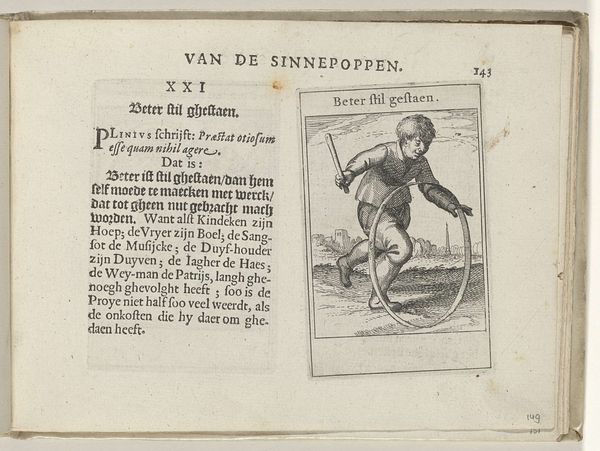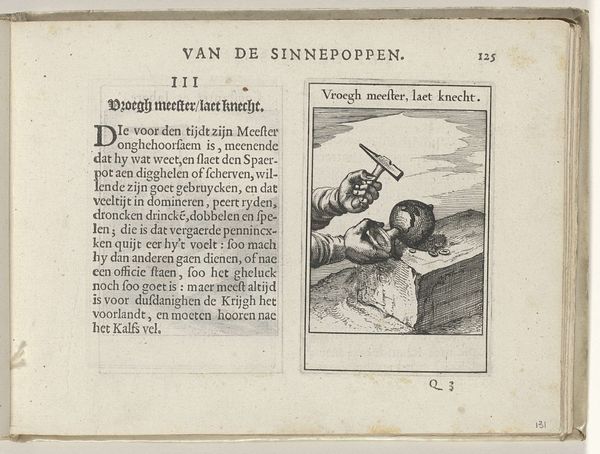
Dimensions: height 137 mm, width 188 mm, height 95 mm, width 60 mm
Copyright: Rijks Museum: Open Domain
This emblem comes from "Zinne-poppen" or "Catching Vanities," a book of poetry and images published by Roemer Visscher in the Netherlands around 1614. The image creates meaning through symbolic visual codes. Here, the flaming heart pierced by an arrow likely references Cupid and the pains of love, a common theme in art and literature of the period. The horseshoe, on the other hand, is a symbol of good luck. The book, as a whole, comments on the social structures of its time by offering moral lessons and reflections on human nature. It participates in a broader cultural and intellectual movement of the Renaissance that sought to revive classical learning and apply it to contemporary life. The choice of emblems as a medium reflects the early modern interest in symbolism and allegory. Understanding this art better requires examining the historical context in which it was produced. Researching the symbolism of emblems and the cultural values of the Dutch Golden Age can offer more meaning. Ultimately, the interpretation of art is contingent on its social and institutional context.
Comments
No comments
Be the first to comment and join the conversation on the ultimate creative platform.
